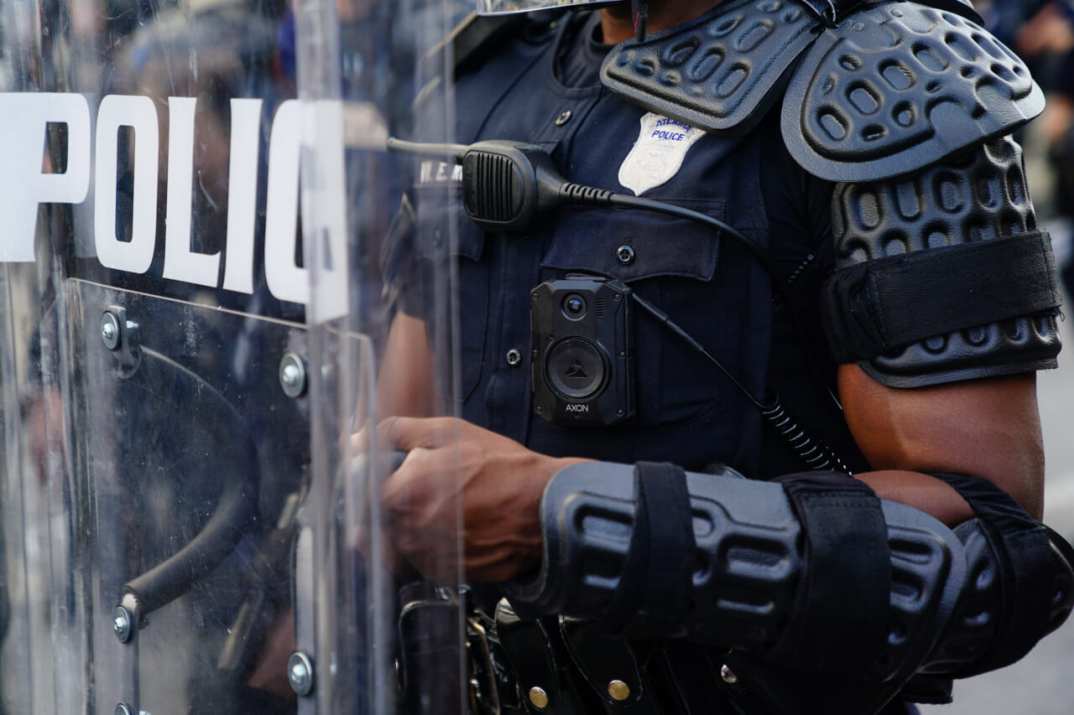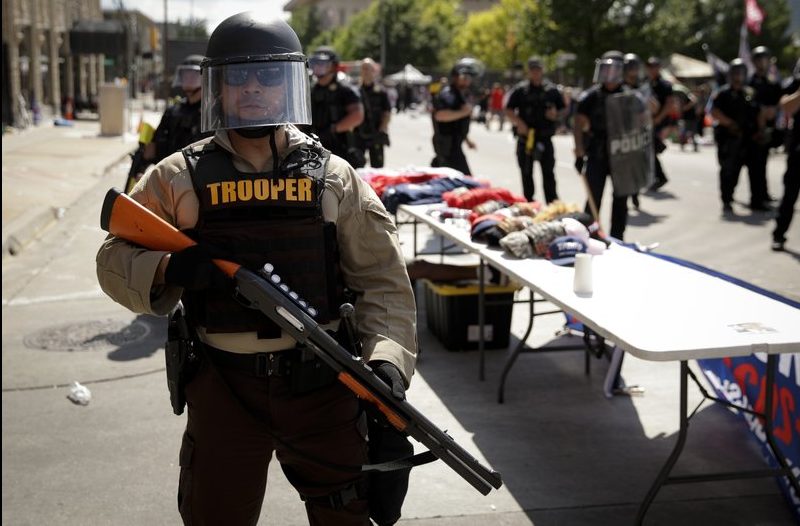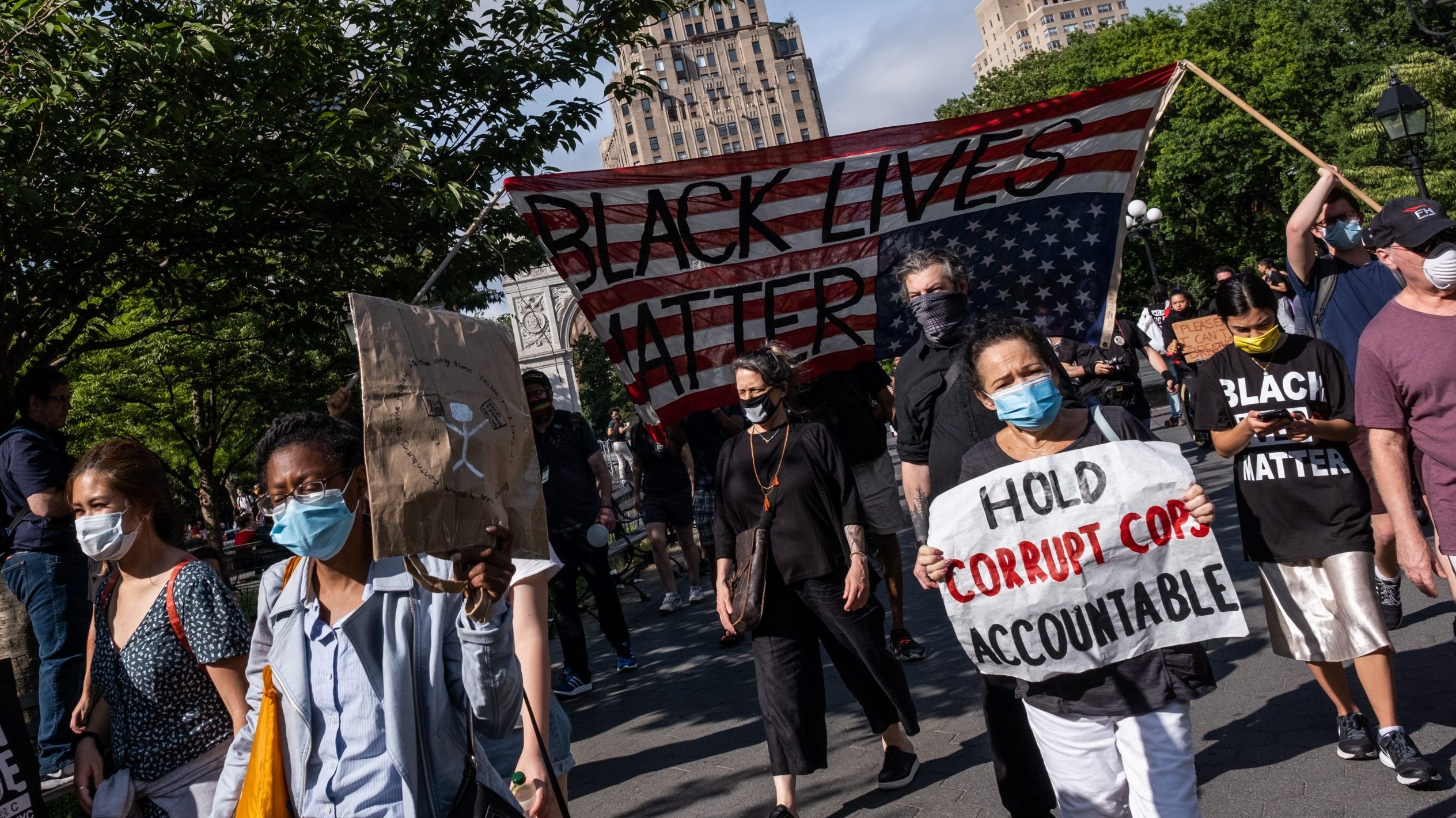The problem with the ‘police kill white people too’ narrative
Opinion: Data reveals race-informed inconsistencies in how policing is both applied and experienced

It is a blatant and cold rebuttal of the centuries of public lynchings to suggest that white people are targets of police violence. Based on what evidence?
Sheniqua Golding’s Medium article, Maintaining Professionalism in the Age of Black Death Is…A lot, is a personal reflection of how Black professionals are expected to show up, at work, without acknowledging race and the toll that racism constantly exacts on Black bodies rang universal. Many of the comments on the article reveal a shared understanding of how oppression is hyper-invisible.
In some ways, Golding’s piece was a reminder that not all white supremacist wear bedsheets and carry tiki torches—she also reminds us that white supremacist wear corporate and tech-casual work uniforms.
RELATED: Injuries at protests draw scrutiny to use of police weaponry
As an example of how white supremacy shows up in almost every space that Black people are forced to inhabit, one bright guy, Dablo Greenhead, felt it important to write the following:
“So, these are all horrific incidents. I didn’t see anything in the Floyd and Aubrey instances that indicated race was a factor,” he wrote. “What were the factors that lead to that conclusion? Since more white than Black people die at the hands of police, and serious black on white crime far exceeds the inverse, I can’t figure out how to reconcile the highly emotional narrative of Black Lives under threat with the statistics.’’
There are numerous reasons this suggestion process is problematic; but for the purposes of this piece let’s focus on the lack of facts. Greenhead’s comments are drawn from a study that was never intended to be used in conversations about race—the irony. Conservative political commentator and fellow at the Manhattan Institute for Research, Heather McDonald, made the following statement testifying before the House Judiciary Committee in August of 2019:
“A study published this August in the Proceedings of the National Academy of Sciences is just the latest research undercutting the media narrative about race and police shootings. It is the rate of violent crime that determines police shootings, the study found. The more frequently officers encounter violent suspects from any given racial group, the greater the chance that members of that group will be shot by a police officer. In fact, Black civilians are shot less, compared to whites, than their rates of violent crime would predict, the study found.’’

In this June 20, 2020, file photo a trooper stands outside the BOK Center where President Trump will hold a campaign rally in Tulsa, Okla. (AP Photo/Charlie Riedel, File)
McDonald did not mention that the PNAS study only examined the race of police officers involved in fatal shootings, not their victims. If the study examined the race of both police officers and their victims their findings may have changed. If the study examined the race of both police officers and their victims, and their findings did not change–Greenhead’s statement would have support. However, because neither of those statements are true there is none.
This sad reality is we don’t have the quantitative data needed to talk, with precision, about the rate at which police officers kill unarmed people across all races. This is by design. If we could collect the data, getting police departments to share the data would present another set of challenges.
What we do know, based on qualitative data, is overwhelming evidence of Black bodies being terrorized by state sanctioned actors who publicly lynch with impunity. What we do know is there are books written about the corrupt and unlawful police practices targeting racial/ethnic minority communities throughout the country.
Reported by city dataset collection site, Open Minneapolis in 2015, Black people made up about 19% of the population. However, when things get physical with police (kicks, punches, shoves, chokeholds etc.,) approximately 58% of the time the person subjected to the violence is Black.
Whites, who make up approximately 60% of the population, are reportedly met with physical police force about 23% of the time. What this all means is, Black people are nearly three times more likely to be met with police violence while making up 19% of the population. Whites make up 60% of the population and are met by police force approximately 35% less than Black people.
Additionally, the body-weight pinning used against Mr. Floyd is “technically” not permitted by the police department, but has been used 2,200 times since 2015, with Black people twice as likely to be on the receiving end than white people (The New York Times, Gamio/Oppel, June 2020). Thousands of people are actively risking their lives in the face of a global pandemic and the threat of police violence because the evidence affirms that punishment for application of such force when the victim is Black is especially rare.

Protesters take part in a Black Lives Matter protest on June 18, 2020 in New York City. Protesters plan to mark Juneteenth with demonstrations against racism and police brutality planned in cities across the country. (Photo by Jeenah Moon/Getty Images)
Additionally, while we’re talking data, riddle us this: If white people are more likely to die by cop, where is the ever growing library of video evidence? Black people have learned to say the names of Black people whose lives have been stolen, almost reflexively. Writing statements mourning the death of Black people at the hands of police to raise awareness and fortify what’s often, at best, hope that the murderer will be arrested, maybe charged, rarely, if ever have they been convicted. That’s what the data suggests.
Black Americans account for less than 13 percent of the population, but they are shot and killed by the police at a rate that’s over twice as high as for white Americans (The Washington Post, May 2020).
According to the same source used by McDonald, an August 2019 study by The Proceedings of the National Academy of Sciences found that among all groups, Black men and boys face the highest lifetime risk of being killed by police. Black women and men, as well as American Indian and Alaska Native women and men, are significantly more likely than white women and men to be killed by police. Latino men are also more likely to be killed by police than are white men. These are facts supported by qualitative and quantitative studies, in addition to the lived experiences of Black people–many who have inherited terror induced responses to police officers and white people in positions of authority.
RELATED: Despite past encounters, Black man saves white police officer from his burning vehicle
What Greenhead and other “all lives matter” advocates fail to appreciate is the data shows Black men in America have a better chance of being routinely executed than winning their local lotteries.
Not only does the data reveal race-informed inconsistencies in how policing is both applied and experienced; policy decisions and data driven by researchers make it difficult to collect and use disaggregated data that would make it more difficult for anyone to deny the powerful role of race and racism in America.
The interruption of fact-less oppressive speech is an important strategy in dismantling white supremacy, and using data to blow up “well intentioned” missives from white supremacists can be cathartic too.
#BlackLivesMatter #BlackDataMatters too!
David J. Johns serves as the executive director of the National Black Justice Coalition, the nation’s leading civil rights organization dedicated to the empowerment of Black lesbian, gay, bisexual, transgender, queer and same-gender loving (LGBTQ/SGL) people, including people living with HIV/AIDS. He is known for his passion, public policy acumen, and fierce advocacy for intersectional social justice.
Kai Stuckey is a Summer 2020 intern at the National Black Justice Coalition. She graduated with dual degrees in political science and Spanish from Howard University. This fall, Kai will begin her graduate studies at Georgetown University as a M.S. in Global Politics and Security candidate.
https://open.spotify.com/episode/0RCfxfB5wJmOf0n18l2pEk
